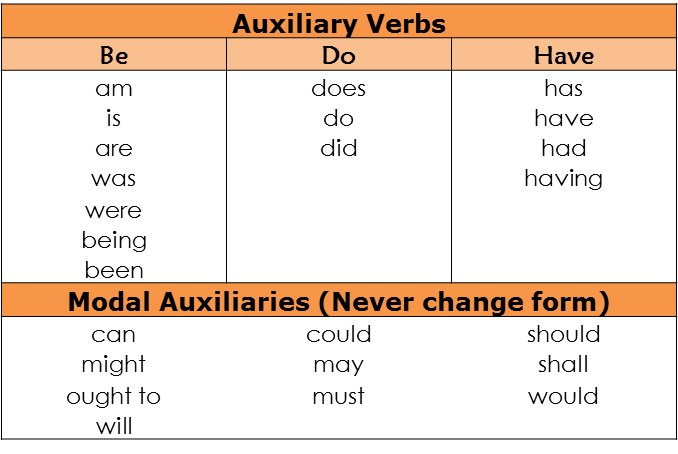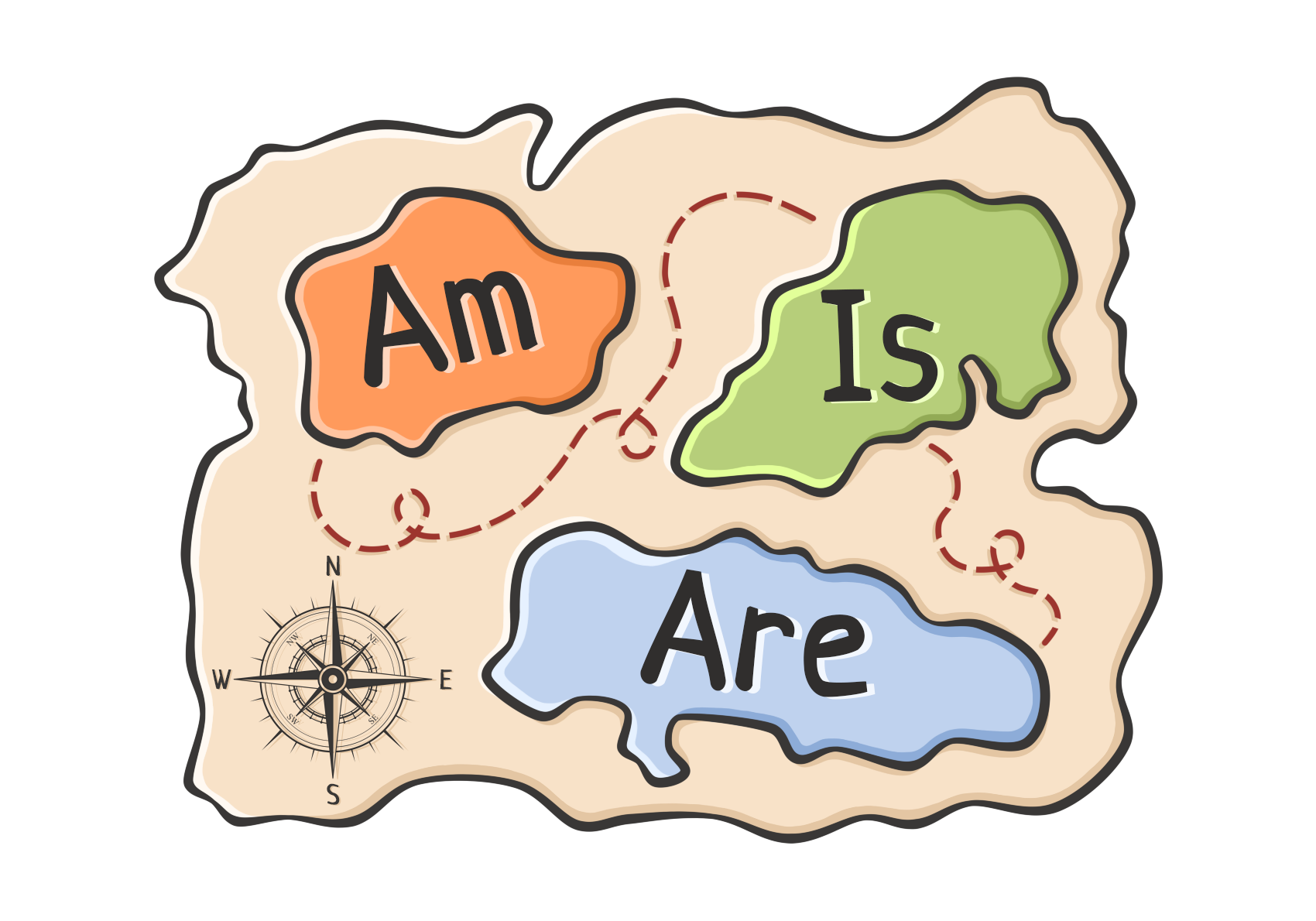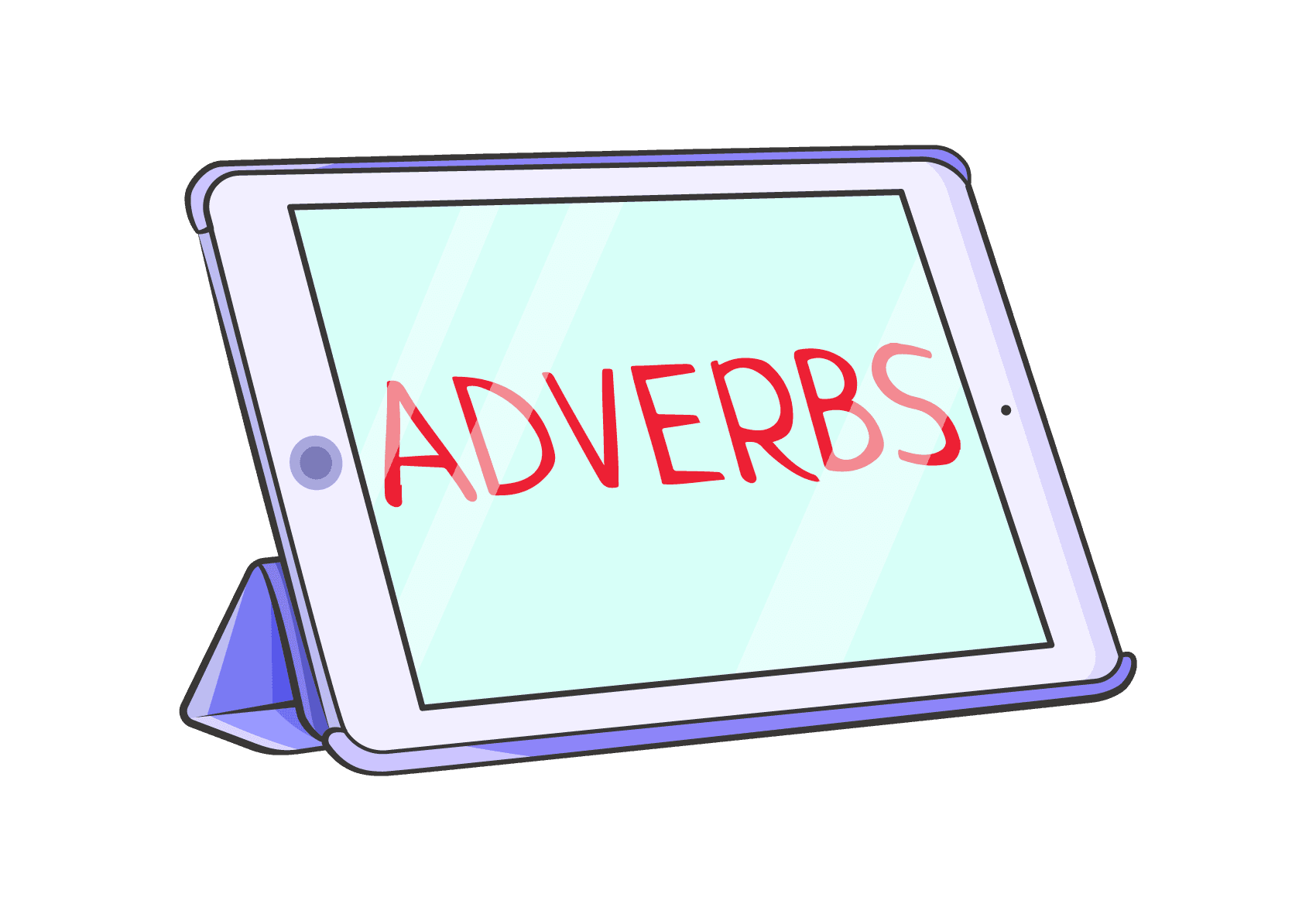1. What is Word Order?
Word order is important: it’s what makes your sentences make sense! So, proper word order is an essential part of writing and speaking—when we put words in the wrong order, the result is a confusing, unclear, and an incorrect sentence.
2.Examples of Word Order
Here are some examples of words put into the correct and incorrect order:
I have 2 brothers and 2 sisters at home. CORRECT
2 brothers and 2 sisters have I at home. INCORRECT
I am in middle school. CORRECT
In middle school I am. INCORRECT
How are you today? CORRECT
You are how today? INCORRECT
As you can see, it’s usually easy to see whether or not your words are in the correct order. When words are out of order, they stand out, and usually change the meaning of a sentence or make it hard to understand.
3. Types of Word Order
In English, we follow one main pattern for normal sentences and one main pattern for sentences that ask a question.
a. Standard Word Order
A sentence’s standard word order is Subject + Verb + Object (SVO). Remember, the subject is what a sentence is about; so, it comes first. For example:
The dog (subject) + eats (verb) + popcorn (object).
The subject comes first in a sentence because it makes our meaning clear when writing and speaking. Then, the verb comes after the subject, and the object comes after the verb; and that’s the most common word order. Otherwise, a sentence doesn’t make sense, like this:
Eats popcorn the dog. (verb + object + subject)
Popcorn the dog eats. (object + subject + verb)
B. Questions
When asking a question, we follow the order auxiliary verb/modal auxiliary + subject + verb (ASV). Auxiliary verbs and modal auxiliaries share meaning or function, many which are forms of the verb “to be.” Auxiliary verbs can change form, but modal auxiliaries don’t. Here’s a chart to help you:
As said, questions follow the form ASV; or, if they have an object, ASVO. Here are some examples:
Can he cook? “Can” (auxiliary) “he” (subject) “cook” (verb)
Does your dog like popcorn? “Does” (A) “your dog” (S) “like” (V) “popcorn” (O)
Are you burning the popcorn? “Are” (A) “you” (S) “burning” (V) “popcorn” (O)
4. Parts of Word Order
While almost sentences need to follow the basic SVO word order, we add other words, like indirect objects and modifiers, to make them more detailed.
a. Indirect Objects
When we add an indirect object, a sentence will follow a slightly different order. Indirect objects always come between the verb and the object, following the pattern SVIO, like this:
I fed the dog some popcorn.
This sentence has “I” (subject) “fed” (verb) “dog” (indirect object) “popcorn” (direct object).
b. Prepositional Phrases
Prepositional phrases also have special positions in sentences. When we use the prepositions like “to” or “for,” then the indirect object becomes part of a prepositional phrase, and follows the order SVOP, like this:
I fed some popcorn to the dog.
Other prepositional phrases, determining time and location, can go at either the beginning or the end of a sentence:
He ate popcorn at the fair. -Or- At the fair he ate popcorn.
In the morning I will go home. I will go home in the morning.
c. Adverbs
Adverbs modify verbs, adjectives, and other adverbs, adding things like time, manner, degree; and often end in ly, like “slowly,” “recently,” “nearly,” and so on. As a rule, an adverb (or any modifier) should be as close as possible to the thing it is modifying. But, adverbs are special because they can usually be placed in more than one spot in the sentence and are still correct. So, there are rules about their placement, but also many exceptions.
In general, when modifying an adjective or adverb, an adverb should go before the word it modifies:
The dog was extremely hungry. CORRECT adverb modifies “hungry”
Extremely, the dog was hungry. INCORRECT misplaced adverb
The extremely dog was hungry. INCORRECT misplaced adverb
The dog was hungry extremely. INCORRECT misplaced adverb
As you can see, the word “extremely” only makes sense just before the adjective “hungry.” In this situation, the adverb can only go in one place.
When modifying a verb, an adverb should generally go right after the word it modifies, as in the first sentence below. BUT, these other uses are also correct, though they may not be the best:
The dog ran quickly to the fair. CORRECT * BEST POSITION
Quickly the dog ran to the fair. CORRECT
The dog quickly ran to the fair. CORRECT
The dog ran to the fair quickly. CORRECT
For adverbs expressing frequency (how often something happens) the adverb goes directly after the subject:
The dog always eats popcorn.
He never runs slowly.
I rarely see him.
Adverbs expressing time (when something happens) can go at either the beginning or of the end of the sentence, depending what’s important about the sentence. If the time isn’t very important, then it goes at the beginning of the sentence, but if you want to emphasize the time, then the adverb goes at the end of the sentence:
Now the dog wants popcorn. Emphasis on “the dog wants popcorn”
The dog wants popcorn now. Emphasis on “now”
5. How to Use Avoid Mistakes with Word Order
Aside from following the proper SVO pattern, it’s important to write and speak in the way that is the least confusing and the most clear. If you make mistakes with your word order, then your sentences won’t make sense. Basically, if a sentence is hard to understand, then it isn’t correct. Here are a few key things to remember:
- The subject is what a sentence is about, so it should come first.
- A modifier (like an adverb) should generally go as close as possible to the thing it is modifying.
- Indirect objects can change the word order from SVO to SVIO
- Prepositional phrases have special positions in sentences
Finally, here’s an easy tip: when writing, always reread your sentences out loud to make sure that the words are in the proper order—it is usually pretty easy to hear! If a sentence is clear, then you should only need to read it once to understand it.
Можно ли использовать вопросительный порядок слов в утвердительных предложениях? Как построить предложение, если в нем нет подлежащего? Об этих и других нюансах читайте в нашей статье.
Прямой порядок слов в английских предложениях
Утвердительные предложения
В английском языке основной порядок слов можно описать формулой SVO: subject – verb – object (подлежащее – сказуемое – дополнение).
Mary reads many books. — Мэри читает много книг.
Подлежащее — это существительное или местоимение, которое стоит в начале предложения (кто? — Mary).
Сказуемое — это глагол, который стоит после подлежащего (что делает? — reads).
Дополнение — это существительное или местоимение, которое стоит после глагола (что? — books).
В английском отсутствуют падежи, поэтому необходимо строго соблюдать основной порядок слов, так как часто это единственное, что указывает на связь между словами.
| Подлежащее | Сказуемое | Дополнение | Перевод |
|---|---|---|---|
| My mum | loves | soap operas. | Моя мама любит мыльные оперы. |
| Sally | found | her keys. | Салли нашла свои ключи. |
| I | remember | you. | Я помню тебя. |
Глагол to be в утвердительных предложениях
Как правило, английское предложение не обходится без сказуемого, выраженного глаголом. Так как в русском можно построить предложение без глагола, мы часто забываем о нем в английском. Например:
Mary is a teacher. — Мэри — учительница. (Мэри является учительницей.)
I’m scared. — Мне страшно. (Я являюсь напуганной.)
Life is unfair. — Жизнь несправедлива. (Жизнь является несправедливой.)
My younger brother is ten years old. — Моему младшему брату десять лет. (Моему младшему брату есть десять лет.)
His friends are from Spain. — Его друзья из Испании. (Его друзья происходят из Испании.)
The vase is on the table. — Ваза на столе. (Ваза находится/стоит на столе.)
Подведем итог, глагол to be в переводе на русский может означать:
- быть/есть/являться;
- находиться / пребывать (в каком-то месте или состоянии);
- существовать;
- происходить (из какой-то местности).
Если вы не уверены, нужен ли to be в вашем предложении в настоящем времени, то переведите предложение в прошедшее время: я на работе — я была на работе. Если в прошедшем времени появляется глагол-связка, то и в настоящем он необходим.
Предложения с there is / there are
Когда мы хотим сказать, что что-то где-то есть или чего-то где-то нет, то нам нужно придерживаться конструкции there + to be в начале предложения.
There is grass in the yard, there is wood on the grass. — На дворе — трава, на траве — дрова.
Если в таких типах предложений мы не используем конструкцию there is / there are, то по-английски подобные предложения будут звучать менее естественно:
There are a lot of people in the room. — В комнате много людей. (естественно)
A lot of people are in the room. — Много людей находится в комнате. (менее естественно)
Обратите внимание, предложения с there is / there are, как правило, переводятся на русский с конца предложения.
Еще конструкция there is / there are нужна, чтобы соблюсти основной порядок слов — SVO (подлежащее – сказуемое – дополнение):
| Подлежащее | Сказуемое | Дополнение | Перевод |
|---|---|---|---|
| There | is | too much sugar in my tea. | В моем чае слишком много сахара. |
Более подробно о конструкции there is / there are можно прочитать в статье «Грамматика английского языка для начинающих, часть 3».
Местоимение it
Мы, как носители русского языка, в английских предложениях забываем не только про сказуемое, но и про подлежащее. Особенно сложно понять, как перевести на английский подобные предложения: Темнеет. Пора вставать. Приятно было пообщаться. В английском языке во всех этих предложениях должно стоять подлежащее, роль которого будет играть вводное местоимение it. Особенно важно его не забыть, если мы говорим о погоде.
It’s getting dark. — Темнеет.
It’s time to get up. — Пора вставать.
It was nice to talk to you. — Приятно было пообщаться.
Хотите научиться грамотно говорить по-английски? Тогда записывайтесь на курс практической грамматики.
Отрицательные предложения
Если предложение отрицательное, то мы ставим отрицательную частицу not после:
- вспомогательного глагола (auxiliary verb);
- модального глагола (modal verb).
| Подлежащее | Вспомогательный/Модальный глагол | Частица not | Сказуемое | Дополнение | Перевод |
|---|---|---|---|---|---|
| Sally | has | not | found | her keys. | Салли не нашла свои ключи. |
| My mum | does | not | love | soap operas. | Моя мама не любит мыльные оперы. |
| He | could | not | save | his reputation. | Он не мог спасти свою репутацию |
| I | will | not | be | yours. | Я не буду твоей. |
Если в предложении единственный глагол — to be, то ставим not после него.
| Подлежащее | Глагол to be | Частица not | Дополнение | Перевод |
|---|---|---|---|---|
| Peter | is | not | an engineer. | Питер не инженер. |
| I | was | not | at work yesterday. | Я не была вчера на работе. |
| Her friends | were | not | polite enough. | Ее друзья были недостаточно вежливы. |
Порядок слов в вопросах
Для начала скажем, что вопросы бывают двух основных типов:
- закрытые вопросы (вопросы с ответом «да/нет»);
- открытые вопросы (вопросы, на которые можно дать развернутый ответ).
Закрытые вопросы
Чтобы построить вопрос «да/нет», нужно поставить модальный или вспомогательный глагол в начало предложения. Получится следующая структура: вспомогательный/модальный глагол – подлежащее – сказуемое. Следующие примеры вам помогут понять, как утвердительное предложение преобразовать в вопросительное.
She goes to the gym on Mondays. — Она ходит в зал по понедельникам.
Does she go to the gym on Mondays? — Ходит ли она в зал по понедельникам?
He can speak English fluently. — Он умеет бегло говорить по-английски.
Can he speak English fluently? — Умеет ли он бегло говорить по-английски?
Simon has always loved Katy. — Саймон всегда любил Кэти.
Has Simon always loved Katy? — Всегда ли Саймон любил Кэти?
Обратите внимание! Если в предложении есть только глагол to be, то в Present Simple и Past Simple мы перенесем его в начало предложения.
She was at home all day yesterday. — Она была дома весь день.
Was she at home all day yesterday? — Она была дома весь день?
They’re tired. — Они устали.
Are they tired? — Они устали?
Открытые вопросы
В вопросах открытого типа порядок слов такой же, только в начало предложения необходимо добавить вопросительное слово. Тогда структура предложения будет следующая: вопросительное слово – вспомогательный/модальный глагол – подлежащее – сказуемое.
Перечислим вопросительные слова: what (что?, какой?), who (кто?), where (где?, куда?), why (почему?, зачем?), how (как?), when (когда?), which (который?), whose (чей?), whom (кого?, кому?).
He was at work on Monday. — В понедельник он весь день был на работе.
Where was he on Monday? — Где он был в понедельник?
She went to the cinema yesterday. — Она вчера ходила в кино.
Where did she go yesterday? — Куда она вчера ходила?
My father watches Netflix every day. — Мой отец каждый день смотрит Netflix.
How often does your father watch Netflix? — Как часто твой отец смотрит Netflix?
Вопросы к подлежащему
В английском есть такой тип вопросов, как вопросы к подлежащему. У них порядок слов такой же, как и в утвердительных предложениях, только в начале будет стоять вопросительное слово вместо подлежащего. Сравните:
Who do you love? — Кого ты любишь? (подлежащее you)
Who loves you? — Кто тебя любит? (подлежащее who)
Whose phone did she find two days ago? — Чей телефон она вчера нашла? (подлежащее she)
Whose phone is ringing? — Чей телефон звонит? (подлежащее whose phone)
What have you done? — Что ты наделал? (подлежащее you)
What happened? — Что случилось? (подлежащее what)
Обратите внимание! После вопросительных слов who и what необходимо использовать глагол в единственном числе.
Who lives in this mansion? — Кто живет в этом особняке?
What makes us human? — Что делает нас людьми?
Косвенные вопросы
Если вам нужно что-то узнать и вы хотите звучать более вежливо, то можете начать свой вопрос с таких фраз, как: Could you tell me… ? (Можете подсказать… ?), Can you please help… ? (Можете помочь… ?) Далее задавайте вопрос, но используйте прямой порядок слов.
Could you tell me where is the post office is? — Не могли бы вы мне подсказать, где находится почта?
Do you know what time does the store opens? — Вы знаете, во сколько открывается магазин?
Если в косвенный вопрос мы трансформируем вопрос типа «да/нет», то перед вопросительной частью нам понадобится частица «ли» — if или whether.
Do you like action films? — Тебе нравятся боевики?
I wonder if/whether you like action films. — Мне интересно узнать, нравятся ли тебе экшн-фильмы.
Другие члены предложения
Прилагательное в английском стоит перед существительным, а наречие обычно — в конце предложения.
Grace Kelly was a beautiful woman. — Грейс Келли была красивой женщиной.
Andy reads well. — Энди хорошо читает.
Обстоятельство, как правило, стоит в конце предложения. Оно отвечает на вопросы как?, где?, куда?, почему?, когда?
There was no rain last summer. — Прошлым летом не было дождя.
The town hall is in the city center. — Администрация находится в центре города.
Если в предложении несколько обстоятельств, то их надо ставить в следующем порядке:
| Подлежащее + сказуемое | Обстоятельство (как?) | Обстоятельство (где?) | Обстоятельство (когда?) | Перевод |
|---|---|---|---|---|
| Fergie didn’t perform | very well | at the concert | two years ago. | Ферги не очень хорошо выступила на концерте два года назад. |
Чтобы подчеркнуть, когда или где что-то случилось, мы можем поставить обстоятельство места или времени в начало предложения:
Last Christmas I gave you my heart. But the very next day you gave it away. This year, to save me from tears, I’ll give it to someone special. — Прошлым Рождеством я подарил тебе свое сердце. Но уже на следующий день ты отдала его обратно. В этом году, чтобы больше не горевать, я подарю его кому-нибудь другому.
Если вы хотите преодолеть языковой барьер и начать свободно общаться с иностранцами, записывайтесь на разговорный курс английского.
Надеемся, эта статья была вам полезной и вы разобрались, как строить предложения в английском языке. Предлагаем пройти небольшой тест для закрепления темы.
Тест по теме «Порядок слов в английском предложении, часть 1»
© 2023 englex.ru, копирование материалов возможно только при указании прямой активной ссылки на первоисточник.
Word order and sentence structure are essential for any language-learner. They can determine the meaning of a sentence, help you emphasize certain aspects of the sentence, and allow your speech and writing to sound more natural.
In this article, I’ll guide you through the following two topics:
- Correct sentence structure in English
- English word order rules
I’ll also provide you with several English word order examples along the way, so you can see how it all works together.
Once you understand the most basic English sentence structures, you’ll be a much more effective communicator. Before we continue, you may find it helpful to take a look at our English grammar page and familiarize yourself with some of the topics I’ll cover.
Let’s get started!
Table of Contents
- Overview of Word Order in English
- Basic Sentence Structure Rules
- Let’s Add Prepositional Phrases
- And Now Modifiers
- Sentence Transformations!
- Final Thoughts
1. Overview of Word Order in English
What is the order of an English sentence?
Overall, the sentence structures in English are very flexible. Which structure you use depends on context and personal preference, although Subject + Verb + Object (SVO) is the most common structure. For example:
“I pet the cat.“
It’s also possible to form very simple sentences with only the subject and verb as long as they form a complete thought (SV):
“He ran.“
That said, there are four types of sentence structures that are commonly used in English.
1- The Four Types of Sentence Structures
Before we go any further, you need to know the difference between dependent and independent clauses.
1. Dependent vs. Independent
Dependent:
A dependent clause is one that requires an independent clause to be a complete sentence. Dependent clauses do not contain enough information (a subject, verb, and complete idea) to be a sentence. An example would be the clause “Since Kaitlyn didn’t come.”
This clause leaves the listener wanting more information. What was the result of Kaitlyn not coming?
Independent:
An independent clause is one that can be used by itself and contains all the information it needs to be complete. An example would be the clause “I felt lonely.”
Although we don’t have tons of information available to us, the above clause represents a complete idea. It has a subject (I), a verb (felt), and a word that adds necessary information to the verb (lonely).
Putting Them Together:
Remember how I said that a dependent clause needs an independent clause to be complete? Check this out:
“Since Kaitlyn didn’t come, I felt lonely.”
Now we have an answer to what was previously a dependent clause. And now we have even added more information to the already-completed independent clause. It’s a win-win!
2. What are Four Types of Sentence Structures?
There are four basic English sentence structure types (simple, compound, complex, compound-complex). We’ve outlined them below.
| Definition | Examples | |
|---|---|---|
| Simple | Requires a subject and a verb.
Consists of one independent clause. Sometimes it has an object as well. |
“I worked.” OR “I worked on the book.”
He proposed. OR “He proposed to her.” “She smiled.” OR “She smiled at him.” |
| Compound | Consists of two (or more) independent clauses.
The independent clauses are usually connected by a linking word or phrase (as shown in these examples), a semicolon, or a colon. |
“I worked, and then I made dinner.”
“He proposed, and she said yes.” “She smiled and (she) took his hand.” |
| Complex | Consists of one independent clause and one dependent clause. | “I worked, even though I was tired.“
“Though nervous, he proposed.“ “Because she smiled, he was happy.“ |
| Compound-Complex | Consists of two independent clauses and one dependent clause. | “I worked, even though I was tired, and then I made dinner.“
“Though nervous, he proposed, and she said yes.“ “Because she smiled, he was happy; then she took his hand.“ |
This is just an overview. In the following sections, I’ll go into more detail about how these sentence transformations work, starting with the basics of word order in English.
2. Basic Sentence Structure Rules
As mentioned earlier, in English, you only need two words to create a whole sentence: The subject (S) and the verb (V). This is the SV sentence structure.
“Sarah writes.“
You can add more information to this simple sentence by adding an object (O) to the end. This becomes the SVO sentence structure.
“Sarah writes poetry.“
The SV and SVO sentence structures are the most common structures in the United States. The only real exception is when people are giving a command or asking a question. In this case, they may be able to get away with using one word or an incomplete thought:
- “Peter!” (S)
- “Stop!” (V)
- “The book!” (O)
- “Why?” (Question)
In the cases above, the context will help you determine the meaning.
In all other situations, it’s most proper to use the SV or SVO structure (unless you want to talk like Yoda with OSV).
3. Let’s Add Prepositional Phrases
1- The Basics
What happens to a sentence when you add a prepositional phrase? What does that look like?
A prepositional phrase adds information to simple sentences. Often, it answers the questions of where, when, how, and why something happened.
Here are four examples of prepositional phrases:
- In the park (Where)
“Sarah writes poetry in the park.”
- At night (When)
“Sarah writes poetry at night.”
- By herself (How)
“Sarah writes poetry by herself.”
- Because it’s fun (Why)
“Sarah writes poetry because it’s fun.”
2- Position in a Sentence
In the above examples, the prepositional phrases are at the end of the sentence. But, a prepositional phrase can also come at the beginning of a sentence, although this is less common. The order you choose depends on what you want to emphasize in your sentence.
For example, if you want to emphasize what time Sarah writes poetry, you could say:
“At night, Sarah writes poetry.“
This indicates when Sarah chooses to write. It also suggests that when she writes is more important than the fact that she writes poetry in general.
3- What to do with Multiple Prepositions
What if you wanted to tell someone all the information above in one sentence? Well, here are a few different ways:
- “Sarah writes poetry in the park by herself at night because it’s fun.“
- “In the park, Sarah writes poetry at night by herself because it’s fun.“
- “At night, Sarah writes poetry in the park by herself because it’s fun.“
- “Sarah writes poetry by herself in the park at night because it’s fun.“
- “At night, in the park by herself, Sarah writes poetry because it’s fun.“
Note that, usually, the why prepositional phrase comes at the end of the sentence. It tends to sound better there, and people are still able to emphasize it when it’s at the end through tone of voice.
As you can see, the word order in English sentences for prepositional phrases is flexible. In general, you can choose the order that makes the most sense to you.
And don’t worry too much. In most cases, people don’t use sentences this long in conversations! Instead, you’re more likely to hear a simple: “Sarah writes poetry in the park at night.“
4. And Now Modifiers
A modifier is a word that modifies (adds info or meaning to) another word, usually a noun or verb. Below is an English word order chart describing each type of modifier with examples.
| Definition | Examples | Usage | Placement | |
|---|---|---|---|---|
| Adjectives | Words that describe a noun. | Hot
Easy |
1. “It was a hot day.”
2. “The test was easy.” |
1. Before the noun it describes.
2. After the noun it describes, with a “be” verb in between. |
| Adverbs | Words that describe a verb. | Quickly
Carefully Hopefully Currently |
1. “Quickly, I ran.”
2. “She put the knife down carefully.” 3. “The cat followed hopefully after its owner.” 4. “I currently don’t own a cat.” |
1. Beginning of a sentence.
2. End of a sentence. 3. After the verb it describes. 4. After the subject performing the verb. |
| Determiners | Words that indicate which of something you’re talking about. | This
That These Those |
1. “This is good.”
2. “He didn’t know that.” 3. “These cookies are delicious.” 4. “Aren’t those strange?” |
1. Beginning of a sentence.
2. End of a sentence. 3. Before a noun. 4. After a verb and before an adjective. |
| Numerals | Numbers that describe how many. | One
Two Three |
1. “One more, please.”
2. “Can I have two?” 3. “I want three donuts.” |
1. Beginning of a sentence.
2. End of a sentence. 3. After a verb. |
| Possessors | Words that indicate who possesses something. | His
Her |
1. “That book is his.”
2. “Where’s her backpack?” |
1. End of a sentence.
2. Before a noun, usually an object. |
| Relative Clauses | A series of words that add information to a sentence. | That I ordered
That he saw Of the color That she wore |
1. “That I ordered a bicycle is strange.”
2. “Where’s the squirrel that he saw?” 3. “The flower was of the color red.” 4. “The dress that she wore was very pretty.” |
1. Beginning of a sentence. [uncommon]
2. End of a sentence. 3. After a be verb and before an adjective. 4. After a noun, usually an object. |
Confused about how a relative clause differs from a prepositional phrase? You can find more information on this page.
1- Using Multiple Modifiers
What happens if you need to use more than one modifier in a sentence?
Key: Adjective, Adverb, Possessor, Relative Clause.
I quickly sat on the green grass and dropped my book beside me.
I dropped my book beside me and quickly sat on the green grass.
The two sentences above use all the same words, but the two clauses are in a different order. Yet, note that the order of the modifiers within those clauses remains the same, even though the order of what happens in the sentence differs.
- The adjective is before the noun it describes (green grass).
- The adverb is before the verb it describes (quickly sat).
- The possessor is before the object that’s owned (my book).
- The relative clause explains where the book was dropped (beside me).
Note that for the adverb, one could also say “sat quickly,” and it would be correct.
5. Sentence Transformations!
Okay. So how do you use this information to create longer, more specific sentences?
Because the English language is flexible with its word order, there are no solid rules for how to do this. The word order of modifiers and prepositional phrases often depends on the context.
Below are a couple of English word order exercises to show you how this works.
—
1) Let’s take a look at this simple S + V sentence, and go from there.
“Carol ate.“
2) Add an object to create an SVO sentence. This will let the reader know what Carol ate.
“Carol ate soup.“
3) Now, how much soup did Carol eat?
“Carol ate three bowls of soup.“
4) When did Carol eat the soup?
“Carol ate three bowls of soup yesterday.“
5) What kind of soup did Carol eat?
“Carol ate three bowls of minestrone soup yesterday.“
—
Keep in mind that this is only one example of how you can transform a sentence. For example, you could also say, “Yesterday, Carol ate three bowls of minestrone soup.” And it would mean the same thing.
—
Now let’s look at another example:
1) Wendy played.
2) Wendy played chess.
3) Wendy played two games of chess.
4) Wendy played two games of chess last night.
5) Wendy played two difficult games of chess last night.
Here, we did exactly the same thing, except in the final step when we added the modifier “difficult.” Instead of saying “the chess” was difficult, we said that the games of chess were difficult, which sounds more natural in English.
1- Bonus: Making it a Yes-or-No Question
You’ve learned about simple and complex sentences, but what about English word order in questions?
There are two main ways that you can turn sentences into simple questions.
Option 1
1) Add the appropriate verb to the very beginning of the sentence.
2) Conjugate the verb accordingly.
3) Put a question mark at the very end of the sentence.
Here’s how this would look using our example sentences:
Did Carol eat three bowls of minestrone soup yesterday?
Did Wendy play two difficult games of chess last night?
You may be wondering why the verbs are in the present tense in the questions, instead of the past tense. Although the events took place in the past (yesterday and last night), when asking a question about past events, the verbs should be in the present tense.
For a more detailed explanation of how to conjugate verbs, make sure to visit my article on English verb conjugation!
Option 2
1) Simply put a question mark at the end of the original sentence.
Carol ate three bowls of minestrone soup yesterday?
Wendy played two difficult games of chess last night?
This option is a little less formal than the first option. It’s typically used when you’re astonished or amazed at something. In the first example, you may emphasize “three bowls” because that’s a lot of soup!
6. Final Thoughts
Because there are so many ways you can compose sentences in English, you may feel overwhelmed. Even though flexibility can be handy, it can take a long time to get used to English sentence structures.
The word orders I outlined in this article are the most commonly used ones and are what you should focus on when you start learning English. Review the examples as many times, and as often, as you need to. The more you expose yourself to these sentence structures, the more familiar you’ll become with them.
In the meantime, don’t be afraid to practice! You may want to start by writing or typing out simple sentences, and then expanding them step-by-step as I did above. And once you’re comfortable with the process, try using longer sentences in conversations with friends or family!
For more English language content from EnglishClass101.com, check out the following pages:
- Top 100 English Nouns
- Top 100 English Adjectives
- Top 100 English Verbs
- Top 100 English Adverbs
- Pronouns in English
Is there anything you’re still struggling with, or any topic we haven’t covered yet? Feel free to reach out with any questions or concerns in the comments section, and we’ll do our best to help you out!
Happy learning!

Normally, sentences in the English language take a simple form. However, there are times it would be a little complex. In these cases, the basic rules for how words appear in a sentence can help you.
Word order typically refers to the way the words in a sentence are arranged. In the English language, the order of words is important if you wish to accurately and effectively communicate your thoughts and ideas.
Although there are some exceptions to these rules, this article aims to outline some basic sentence structures that can be used as templates. Also, the article provides the rules for the ordering of adverbs and adjectives in English sentences.
Basic Sentence Structure and word order rules in English
For English sentences, the simple rule of thumb is that the subject should always come before the verb followed by the object. This rule is usually referred to as the SVO word order, and then most sentences must conform to this. However, it is essential to know that this rule only applies to sentences that have a subject, verb, and object.
For example
Subject + Verb + Object
He loves food
She killed the rat
Sentences are usually made of at least one clause. A clause is a string of words with a subject(noun) and a predicate (verb). A sentence with just one clause is referred to as a simple sentence, while those with more than one clause are referred to as compound sentences, complex sentences, or compound-complex sentences.
The following is an explanation and example of the most commonly used clause patterns in the English language.
 Inversion
Inversion
The English word order is inverted in questions. The subject changes its place in a question. Also, English questions usually begin with a verb or a helping verb if the verb is complex.
For example
Verb + Subject + object
Can you finish the assignment?
Did you go to work?
 Intransitive Verbs
Intransitive Verbs
Some sentences use verbs that require no object or nothing else to follow them. These verbs are generally referred to as intransitive verbs. With intransitive verbs, you can form the most basic sentences since all that is required is a subject (made of one noun) and a predicate (made of one verb).
For example
Subject + verb
John eats
Christine fights
 Linking Verbs
Linking Verbs
Linking verbs are verbs that connect a subject to the quality of the subject. Sentences that use linking verbs usually contain a subject, the linking verb and a subject complement or predicate adjective in this order.
For example
Subject + verb + Subject complement/Predicate adjective
The dress was beautiful
Her voice was amazing
 Transitive Verbs
Transitive Verbs
Transitive verbs are verbs that tell what the subject did to something else. Sentences that use transitive verbs usually contain a subject, the transitive verb, and a direct object, usually in this order.
For example
Subject + Verb + Direct object
The father slapped his son
The teacher questioned his students
 Indirect Objects
Indirect Objects
Sentences with transitive verbs can have a mixture of direct and indirect objects. Indirect objects are usually the receiver of the action or the audience of the direct object.
For example
Subject + Verb + IndirectObject + DirectObject
He gave the man a good job.
The singer gave the crowd a spectacular concert.
The order of direct and indirect objects can also be reversed. However, for the reversal of the order, there needs to be the inclusion of the preposition “to” before the indirect object. The addition of the preposition transforms the indirect object into what is called a prepositional phrase.
For example
Subject + Verb + DirectObject + Preposition + IndirectObject
He gave a lot of money to the man
The singer gave a spectacular concert to the crowd.
 Adverbials
Adverbials
Adverbs are phrases or words that modify or qualify a verb, adjective, or other adverbs. They typically provide information on the when, where, how, and why of an action. Adverbs are usually very difficult to place as they can be in different positions in a sentence. Changing the placement of an adverb in a sentence can change the meaning or emphasis of that sentence.
Therefore, adverbials should be placed as close as possible to the things they modify, generally before the verbs.
For example
He hastily went to work.
He hurriedly ate his food.
However, if the verb is transitive, then the adverb should come after the transitive verb.
For example
John sat uncomfortably in the examination exam.
She spoke quietly in the class
The adverb of place is usually placed before the adverb of time
For example
John goes to work every morning
They arrived at school very late
The adverb of time can also be placed at the beginning of a sentence
For example
On Sunday he is traveling home
Every evening James jogs around the block
When there is more than one verb in the sentence, the adverb should be placed after the first verb.
For example
Peter will never forget his first dog
She has always loved eating rice.
 Adjectives
Adjectives
Adjectives commonly refer to words that are used to describe someone or something. Adjectives can appear almost anywhere in the sentence.
Adjectives can sometimes appear after the verb to be
For example
He is fat
She is big
Adjectives can also appear before a noun.
For example
A big house
A fat boy
However, some sentences can contain more than one adjective to describe something or someone. These adjectives have an order in which they can appear before a now. The order is
Opinion – size – physical quality – shape – condition – age – color – pattern – origin – material – type – purpose
If more than one adjective is expected to come before a noun in a sentence, then it should follow this order. This order feels intuitive for native English speakers. However, it can be a little difficult to unpack for non-native English speakers.
For example
The ugly old woman is back
The dirty red car parked outside your house
When more than one adjective comes after a verb, it is usually connected by and
For example
The room is dark and cold
Having said that, Susan is tall and big
Get an expert to perfect your paper
Порядок важен везде и всюду, тем более если мы говорим о построении предложения в английском. Почему?
Ответ на этот вопрос кроется в морфологии и словообразовании слов.
Если в русском языке определить часть речи и какую функцию она выполняет в предложении нам помогают окончания и суффиксы,
то в английском языке это просто так не прокатит. Возьмите к примеру окончание “s”, которое мы добавляем как к существительным
во множественном числе, так и к глаголам в настоящем времени с местоимениями третьего лица единственного числа.
Важно знать порядок построения и типы, чтобы уметь правильно составить предложения:
утвердительные, вопросительные, отрицательные, придаточные предложения и другие.
Разобраться в грамматике английского языка – задача не из простых, ведь в ней столько разных тем на разных уровнях,
но с командой Инглиш Шоу она больше не будет казаться вам непосильной.
Записывайтесь на бесплатный пробный урок в нашу онлайн-школу
и оцените преимущества изучения языка с опытным преподавателем, не выходя из дома!
Содержание
- Прямой порядок слов в утвердительных английских предложениях
- Порядок слов в вопросительных предложениях
- Как строятся отрицательные предложения в английском?
- Место наречий в английском предложении
- Порядок употребления прилагательных в предложении
- Порядок слов в сложном предложении
- Особые случаи построения английских предложений
Прямой порядок слов в утвердительных английских предложениях
Прежде чем начать говорить об особенностях построения утвердительных предложений нужно сказать,
что в грамматике английского языка выделяют две формы порядка слов в предложении: Direct Order — правильный порядок слов,
который характеризует повествовательное предложение и Indirect Order — непрямой, который используется для вопросов,
восклицательных предложений или императивов, то есть повелительного наклонения.
Теперь давайте вспомним, что же представляют из себя члены предложения и какие они бывают. Грамматическую основу составляют:
Подлежащее
— это часть речи, которая отвечает на вопросы «Кто?» или «Что?». Подлежащее — это тот, кто выполняет действие.
Оно может быть выражено существительным, местоимением, инфинитивом или герундием.
-
Diving is a very popular extreme sport activity.
Дайвинг является очень популярным экстремальным видом спорта. -
The squirrel is cracking nuts.
Белочка грызет орехи.
Сказуемое
— это глагол, описывающий состояние субъекта или действие.
Важно: в русском языке мы зачастую не употребляем глагол «быть», мы его просто опускаем. В английском же он жизненно необходим.
-
She is a student.
Она студент.
Так мы литературно передадим смысл предложения. Но если перевести дословно, то мы скажем:
Она является студентом. Можно провести параллель с русским словом «есть, являться, существовать».
Стоит отметить, что во многих романо-германских языках «быть» — это основополагающий глагол, который невозможно опустить в предложении.
Помимо грамматической основы предложения (подлежащее и сказуемое) существуют второстепенные члены предложения:
Дополнение
— это то, над кем/чем совершается действие. Оно выражается существительным или герундием.
-
Marta gave me a postcard.
Марта подарила мне открытку.
Определение
— отвечает на вопросы «Какой?», «Какая?», «Чей?» и так далее. Определение выражает признаки субъекта или объекта.
Определение, как правило, стоит перед существительным.
-
Rick didn’t like his third girlfriend.
Рику не нравилась его третья девушка. -
The scientist was studying an important issue.
Ученый изучал очень важный вопрос.
Обстоятельство
— отвечает на такие вопросы как: «Где?», «Когда?», «Как?», «Как часто?», и обычно выражено наречием.
В зависимости от контекста и вида обстоятельства они могут располагаться в конце, начале и в середине предложения.
Подводя некий итог, можно собрать всё в единую универсальную схему в утвердительном предложении:
Subject + Verb + Object + Adverb
Подлежащее + Сказуемое + Дополнение + Обстоятельство
Порядок слов в вопросительных предложениях
Когда мы задаем вопрос, то нарушается прямая последовательность «подлежащее – сказуемое»,
и в этом случае мы используем Indirect Order – обратный порядок слов. Для каждого из пяти основных типов вопросов используется
свой порядок слов, но всё же можно выделить основную закономерность.
Как возможно вы знаете из базового школьного курса по английскому, на первое место в general questions (общих вопросах)
мы ставим глагол-помощник, который у каждого времени свой.
-
Do you speak English?
Ты говоришь по-английски?
Данное правило является универсальным для большинства вопросов. В special questions (специальных вопросах)
мы только добавляем специальное вопросительное слово в начало, при этом сохраняя конструкцию общего вопроса.
-
How often do you speak English?
Как часто ты говоришь на английском?
Если же мы возьмем alternative questions (альтернативные вопросы), то здесь он начинается точно также как и общий,
только потом мы добавляем альтернативу с помощью союза or (или).
-
Do you go surfing or sup-surfing?
Ты занимаешься сёрфингом или сап-серфингом?
Подробнее про образование всех типов вопросов читайте в нашей статье:
«Типы вопросов в английском языке»
Как строятся отрицательные предложения в английском?
Так же, как и в вопросительных предложениях, в отрицательных необходим глагол помощник.
Он служит некой связующей нитью для отрицательной частички not.
Ставится он при этом между подлежащим и сказуемым.
-
I do not know the rules of the game.
Я не знаю правил этой игры. -
They did not clean their room yesterday.
Они не убрались в своей комнате вчера.
Место наречий в английском предложении
Наречие может занимать своё законное место в разных частях предложения.
В конце предложения обычно можно встретить обстоятельства образа действия, места и времени.
-
Kate is walking really fast.
Кейт идёт очень быстро. -
Tony has decorated his room today.
Тони украсил свою комнату сегодня.
В начале предложения можно встретить:
Соединительные наречия: then — тогда, next — затем
-
Then we headed for the train.
Затем мы отправились к поезду.
Вводные наречия выражения мнения: surprisingly — неожиданно, unfortunately — к сожалению
-
Unfortunately, I forgot to take my purse.
К сожалению, я забыла взять мою сумочку.
Наречия степени уверенности: maybe, perhaps — может быть
-
Perhaps the flight has been delayed.
Возможно, рейс был задержан.
Также некоторые обстоятельства используются в середине грамматической основы, например после подлежащего, вспомогательных глаголов или после глагола to be.
К этой группе относятся наречия частоты:
-
I always get up early in the morning.
Я всегда встаю рано утром. -
He is never late for work.
Он никогда не опаздывает на работу.
Любопытно, что sometimes в отличие от других наречий частоты, может стоять в любом месте в предложении.
С помощью такого приема мы можем легко привлечь внимание собеседника.
-
I go to the restaurant just sometimes.
Я хожу в ресторан только иногда.
Также это наречия, указывающие на законченность действия:
almost, nearly – почти
already – уже
just – только что
-
I have just done my homework.
Я только что закончила мою домашнюю работу.
Или на степень уверенности говорящего:
probably – наверное
confidently – уверенно
surely – наверняка
definitely – определенно точно
-
Her attitude has definitely changed for the better since she started this new job.
Её поведение определенно изменилось к лучшему с тех пор, как она начала новую работу.
Порядок употребления прилагательных в предложении
Далеко не секрет, что прилагательные ставятся перед существительными, в этом случае действует такая же система, как и в русском языке.
Но если прилагательных несколько, то употребляются они в определенной последовательности. А именно:
judgement – size – shape – colour – origin – material – purpose
оценка – размер – форма – цвет – происхождение – материал – цель
-
I adore your long, red, Chinese, silk curtains.
Я восхищаюсь твоими длинными, красными, китайскими, шелковыми шторами. -
What you need for your living room is a large oak dining table.
То, что тебе нужно для гостиной это большой дубовый обеденный стол.
После существительного используют определение, которое представляет из себя причастный оборот или конструкцию из нескольких слов.
-
My brother is fond of food made of soya.
Мой брат в восторге от еды из сои.
Порядок слов в сложном предложении
По видам сложные предложения бывают:
The compound sentence – сложносочиненное предложение, в котором простые предложения могут соединяться такими союзами как:
and — и
neither … nor — ни …, ни
as well as — так же как
not only … but also — не только … но и
but — но
-
A cold wind was blowing and a snowstorm began.
Дул холодный ветер, и начиналась метель. -
In her view, that relationship was neither substantial nor crucial.
По мнению оратора, эта взаимосвязь не является ни существенной, ни определяющей.
The complex sentence – сложноподчиненное предложение. Придаточное предложение присоединяется к главному предложению с помощью:
-
I went there when I was a child.
Я ходил туда, когда был ребенком. -
I’ve been meaning to ask you where you get your hair cut.
Я хотел спросить тебя, где ты постриглась.
Таким образом, схема сложного предложения будет выглядеть так:
Main clause + conjunction + Subordinate clause
Главная часть + союз + Придаточная часть
Особые случаи построения английских предложений
К особым случаям построения предложений относится повелительный залог, то есть приказания или повеления.
В этом случае на первом месте будет стоять либо глагол, либо вспомогательный глагол (в случае отрицания).
-
Close the window!
Закрой окно! -
Don’t touch my stuff!
Не трогай мои вещи!
Иногда добавляют обращение в начале:
-
You! Get away from here!
Ты! Убирайся отсюда!
Далее следует вспомнить про конструкции there is / there are. Их мы используем, когда хотим сказать о существовании чего-либо.
There обычно означает там, но в этих конструкциях не переводится. There is – мы употребляем с предметами в единственном числе,
а there are – во множественном. Схема предложений выглядит следующим образом:
There is/are + subject (подлежащее) + object (дополнение)
-
There is a glass on the table.
Вот стакан на столе. -
There are some changes in the schedule.
Есть некоторые изменения в расписании.
Однако, если есть два дополнения, то они ставятся по следующему принципу: сначала косвенное дополнение без предлога, затем прямое дополнение.
-
Steven lent me a pen.
Стивен одолжил мне ручку.
Либо если у вас есть желание поставить сначала прямое дополнение, то косвенное будет использоваться с предлогом to.
-
Marry sent a postcard to her boyfriend.
Мери отправила открытку своему бойфренду.
Таким образом, можно сделать следующий вывод:
Прямой порядок слов используется в утверждениях и отрицаниях.
Непрямой порядок используется в вопросах, повелительных предложениях, конструкциях there is / there are.
Если вы изучаете английский уже не первый год, то наверняка успели убедиться в его многообразии.
Известно, что ни один язык невозможно знать в совершенстве, и английский превосходит все языки в этом отношении, судя только по тому,
что каждый год в Оксфордском словаре прибавляется минимум по тысяче новых слов!
Именно поэтому преподаватели Инглиш Шоу непрестанно следят за всеми «новыми словечками» и языковыми трендами
и с радостью готовы поделиться с вами всеми лайфхаками изучения языка. А первое занятие для вас будет в подарок от нашей школы!
Ждём вас с нетерпением на наших уроках и до новых встреч!

















